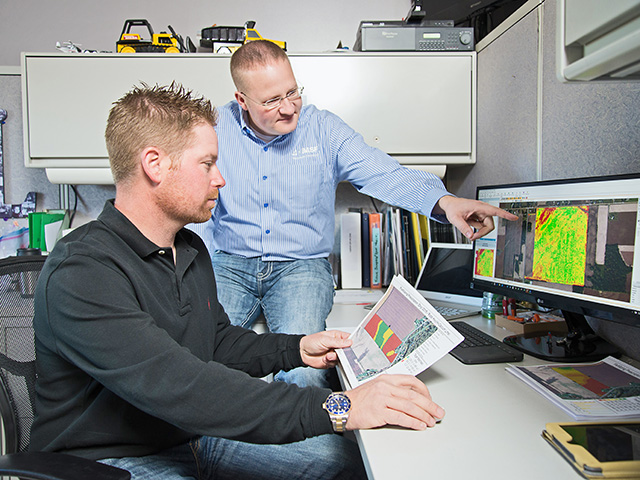This yearlong endeavor looks at how four farmers are evaluating technology and agronomic information that can boost the productivity of their operations.

Low prices or not, David Kay won't be cutting inputs or changing course for 2016 crops. The reason: His intensive soil-testing system, variable-rate applications and corresponding positive results won't let him.
"Our system has helped us deal with the low prices," Kay says. "We have seen the benefits in good years and also as prices have dropped."
What Kay is doing is gathering and mining data, and then utilizing the computer skills that were his main contribution when he joined his father-in-law's (Rick Knierim) farming operation. The farm is based in southeast Michigan, near Jasper.
Although he was brought up around heavy equipment in his own father's excavation business, Kay knew little about farming until he married Knierim's daughter, Lisa. He quickly discovered he had found two loves.
"I realized the farm was where I wanted to be; my heart was in it," Kay says. "Not growing up on a farm, my biggest challenge was having so much to learn. I had some very good mentors."
Over the past 10 years, Jonathan Harfst, BASF Innovation Specialist, has worked with Kay and watched his transition from seasonal helper to technology manager and data doctor. "He works off science and research, not just his gut," Harfst says. "I really value his trials and the data they produce."
Kay's data-gathering is literally hands-on and starts with soil sampling. He samples on grids as small as 1 acre in size. Most fields are on no more than a three-year rotation. Research fields are sampled every year. While his software program lays out his sampling pattern, he adjusts it for good and bad spots like sand points.
"I'm constantly manipulating the pattern," Kay says. "I don't like to go over a 2.2-acre grid. I do multiple pulls in an area about the size of a pickup, recording the four-wheeler's location by RTK so I can always return to the same point."
Combining soil test results, yield maps and other data over multiple years puts teeth in Kay's input-planning decisions. As a result of field research, observations and collected data, he and Knierim put the farm on a high-calcium program.
Lime in the area tends to be relatively high in magnesium. Kay feels the small particles make the farm's soils too tight, causing them to crust over and slow water-infiltration rates. As a result, a field trial with high-calcium/low-magnesium lime with added gypsum has gone farmwide.
"After the first year's application, we went through spots once where previously we had to hit them four to six times to break down the crust," Kay says.
At first, he thought it was a fluke, but the next year, conditions just got better. The bull tongues, as the tough spots are called locally, were gone. In their place was a better seedbed with better water infiltration, better soil flocculation and, ultimately, better yields.
"We raised the baseline on soil health," Kay adds.
With his sampling, he found base-saturation rates of calcium as low as 45 to 50%. After several years of the new program, rates are now at or a little above 80%. But that doesn't mean higher is automatically better."We continue to run analyses to verify by the data whether the best calcium level at a point in the field is 80, 85 or 86," Kay says. "If the data can't prove it, what I think doesn't matter."
Kay runs soil-lab results through his Ag Leader SMS Advanced software and his own equations to spin out variable-rate prescriptions. Before moving ahead with any applications, though, he adds a dose of common sense.
"You don't dump 450 pounds of potash on blow sand that can't hold it because a computer program says so," he says. "Software recommendations need to be reviewed and modified, if needed."
Kay farms in the Lake Erie watershed and places a high value on putting the right nutrients in the right place. He is proud to be ahead of the curve, voluntarily using setbacks to restrict phosphorus from waterways and ditches.
"We are doing it before it is mandated," Kay says. "It is our responsibility to take care of the soil and water quality. They are what put a roof over my children's heads and what lets me sleep at night."